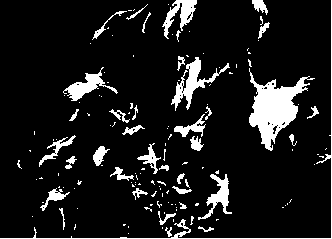Lithium iron phosphate nanorod/graphene composite material as well as preparation method and application thereof
A composite material, lithium iron phosphate technology, applied in the direction of nanotechnology, nanotechnology, nanotechnology for materials and surface science, etc. The problem of uneven dispersion of graphene, etc., can achieve the effect of ensuring that the capacity does not decay, increasing the transmission rate, improving the rate performance and cycle performance.
- Summary
- Abstract
- Description
- Claims
- Application Information
AI Technical Summary
Problems solved by technology
Method used
Image
Examples
Embodiment 1
[0040] Example 1 Preparation of lithium iron phosphate nanorods / graphene composites
[0041] 1. Method
[0042] 1. Preparation of ferrous oxalate / graphene oxide composites
[0043] First, 4 mmol of graphene oxide was dissolved in deionized water, and ultrasonically dispersed for 2 h to obtain a graphene oxide dispersion. Then, 10 mmol of ferrous sulfate heptahydrate was added to the above graphene oxide dispersion and stirred for 12 h to obtain a mixed solution. , slowly pour 10.5 mmol oxalic acid solution into the mixture, continue stirring for 1.5 h, and then heat it in a drying box at 90 °C for 7 h to make it react completely to obtain a solid precipitate; The ferrous oxalate / graphene oxide composite material is obtained by grinding after drying.
[0044] 2. Preparation of LiFePO4 nanorods / graphene composites
[0045] Grind and mix 10 mmol of the above ferrous oxalate / graphene oxide with 10.5 mmol of lithium acetate dihydrate for 15 min until fully mixed, and then add 10...
Embodiment 2
[0048] Example 2 Preparation of lithium iron phosphate nanorods / graphene composites
[0049] 1. Method
[0050] Preparation of ferrous oxalate / graphene oxide composite material: First, 10 mmol of graphene oxide was dissolved in deionized water, and ultrasonically dispersed for 2 h to obtain a graphene oxide dispersion, and then 8 mmol of graphene oxide was added to the above graphene oxide dispersion. Hydrate ferrous sulfate, stir for 10 h to obtain a mixed solution, slowly pour 8.5 mmol of oxalic acid solution into the mixed solution, continue stirring for 2 h, heat at 80 °C for 8 h in a drying box to complete the reaction, and obtain a solid precipitate; The above-mentioned solid precipitate is suction-filtered and washed three times, and after vacuum drying, it is ground to obtain a ferrous oxalate / graphene oxide composite material.
[0051] Preparation of lithium iron phosphate nanorods / graphene composites: 8 mmol of the above ferrous oxalate / graphene oxide was thoroughly...
Embodiment 3
[0052] Example 3 Preparation of lithium iron phosphate nanorods / graphene composites
[0053] 1. Method
[0054] Preparation of ferrous oxalate / graphene oxide composite material: First, 15 mmol of graphene oxide was dissolved in deionized water, and ultrasonically dispersed for 2 h to obtain a graphene oxide dispersion, and then 12 mmol of graphene oxide was added to the above graphene oxide dispersion. Hydrate ferrous sulfate, stir for 14 h to obtain a mixed solution, slowly pour 12.5 mmol of oxalic acid solution into the mixed solution, continue stirring for 1 h, and then heat it in a drying box at 100 °C for 6 h to complete the reaction to obtain a solid precipitate The above-mentioned solid precipitate is filtered and washed three times, and after vacuum drying, it is ground to obtain ferrous oxalate / graphene oxide composite material.
[0055] Preparation of lithium iron phosphate nanorods / graphene composites: 12 mmol of the above ferrous oxalate / graphene oxide was thoroug...
PUM
| Property | Measurement | Unit |
|---|---|---|
| Concentration | aaaaa | aaaaa |
| Diameter | aaaaa | aaaaa |
| Diameter | aaaaa | aaaaa |
Abstract
Description
Claims
Application Information
 Login to View More
Login to View More - R&D
- Intellectual Property
- Life Sciences
- Materials
- Tech Scout
- Unparalleled Data Quality
- Higher Quality Content
- 60% Fewer Hallucinations
Browse by: Latest US Patents, China's latest patents, Technical Efficacy Thesaurus, Application Domain, Technology Topic, Popular Technical Reports.
© 2025 PatSnap. All rights reserved.Legal|Privacy policy|Modern Slavery Act Transparency Statement|Sitemap|About US| Contact US: help@patsnap.com



